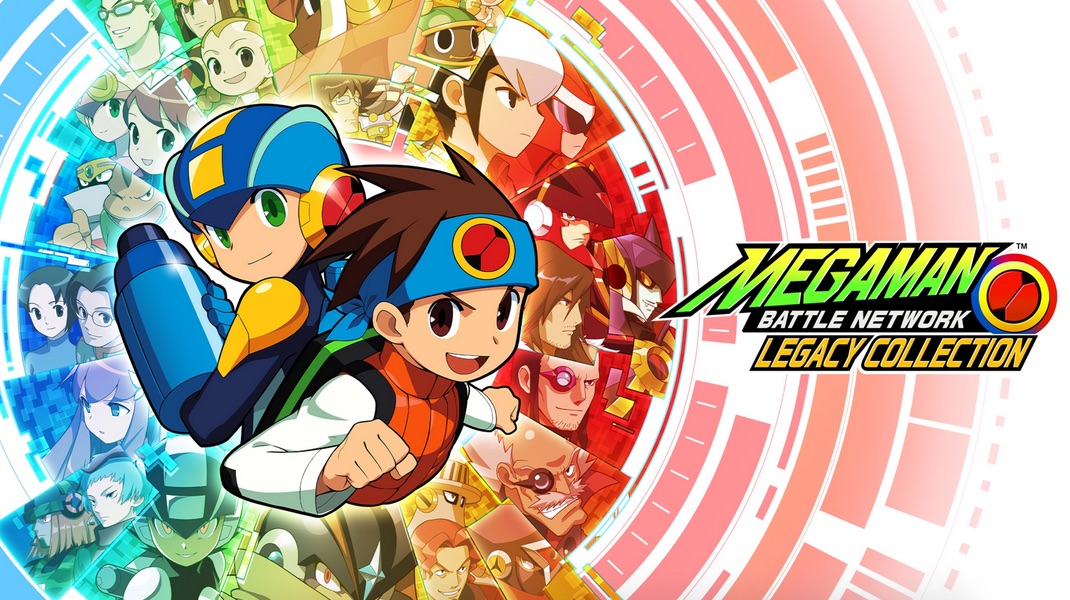
Mega Man has gone through a lot of forms and series. There’s the baseline Mega Man series, the grittier Mega Man X, the sometimes forgotten Mega Man Legends, and more.
Among all these series, however, Mega Man Battle Network is set aside for being a different sort of game. It’s not a platformer or a 3D action game. The Battle Network series is a strange hybrid of deck-building and RPG and that’s why it’s still remembered today amongst all the noise that is the Mega Man franchise.
This is a compilation of several Gameboy Advance RPGs from the early 2000s. What can gamers expect from such a dense package of games? How do they hold up? Which ones are the best? Find out in this Mega Man Battle Network Legacy Collection review!
Mega Man Battle Network Legacy Collection
Developer: Capcom
Publisher: Capcom
Platforms: Windows PC, Gameboy Advance, PlayStation 4, PlayStation 5, Nintendo Switch (Reviewed)
Release Date: April 14, 2023
Players: 1
Price: $59.99 USD
So what are we getting out of the whole game? This is what you get in the Mega Man Battle Network Legacy Collection:
Mega Man Battle Network
Mega Man Battle Network 2
Mega Man Battle Network 3 Blue
Mega Man Battle Network 3 White
Mega Man Battle Network 4 Red Sun
Mega Man Battle Network 4 Blue Moon
Mega Man Battle Network 5 Team Protoman
Mega Man Battle Network 5 Team Colonel
Mega Man Battle Network 6 Cybeast Gregar
Mega Man Battle Network 6 Cybeast Falzar
Games 3, 4, 5, and 6 come in two flavors so to be conservative let’s just say you get six whole games across both volumes. The Battle Network games are full (if slightly short) RPGs, each easily taking over a dozen hours to complete if you explore everything. Games 1-3 and 4-6 are also available as separate volumes which works out for gamers who are not interested in purchasing all of them.
The Mega Man Battle Network series takes place in a sci-fi world where instead of actual robots, those characters are reimagined as programs. Citizens of the world use NetNavis to explore the internet. These NetNavis are personalized programs that appear to interact physically with networks and connected devices.
Imagine if Dr. Light did not become a robotics engineer and instead became an interfacing programmer for the web. Every character and robot from the Mega Man series is reimagined as sentient programs that exist as utilities or NetNavis for regular users like Lan Hikari. Mega Man can explore an abstract representation of the net, like Clu in the TRON movies.
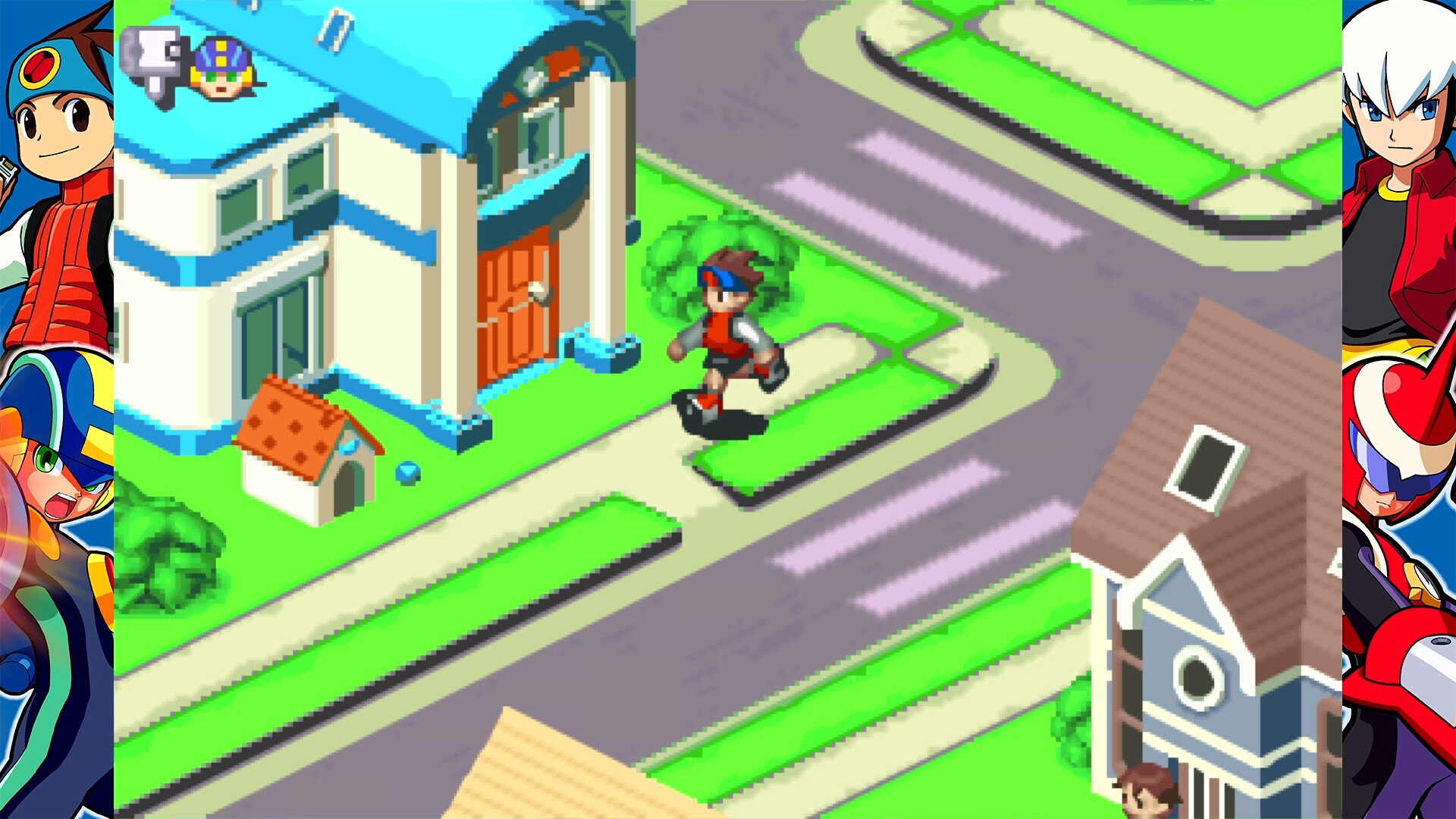
MegaMan.EXE is the NetNavi of Lan Hikari, a young boy who ends up in a position to stand against evil organizations throughout the game series, most notably WWW (World Three). Lan uses Mega Man to “jack in” (stop it) to devices.
Jacking into devices introduces Mega Man to what’s a mini-RPG dungeon. Actions taken when jacked in can make changes to the overworld and allow Lan to progress. Jack-in to gateway controllers, light switches, etc. The internet is depicted as isometric mazes of circuitry and access ports; a mix of Tron and Y2K graphics.
Along the way, Mega Man will have to fight. These fights take place on an 8×3 grid that’s split down the middle, players will use “Chips” to perform certain attacks and you can edit your Chip “Deck” to suit your play style. Each game refines the system, with the first game being the most basic iteration of the concept. One example of refinement is escaping battle no longer taking a slot in the deck.
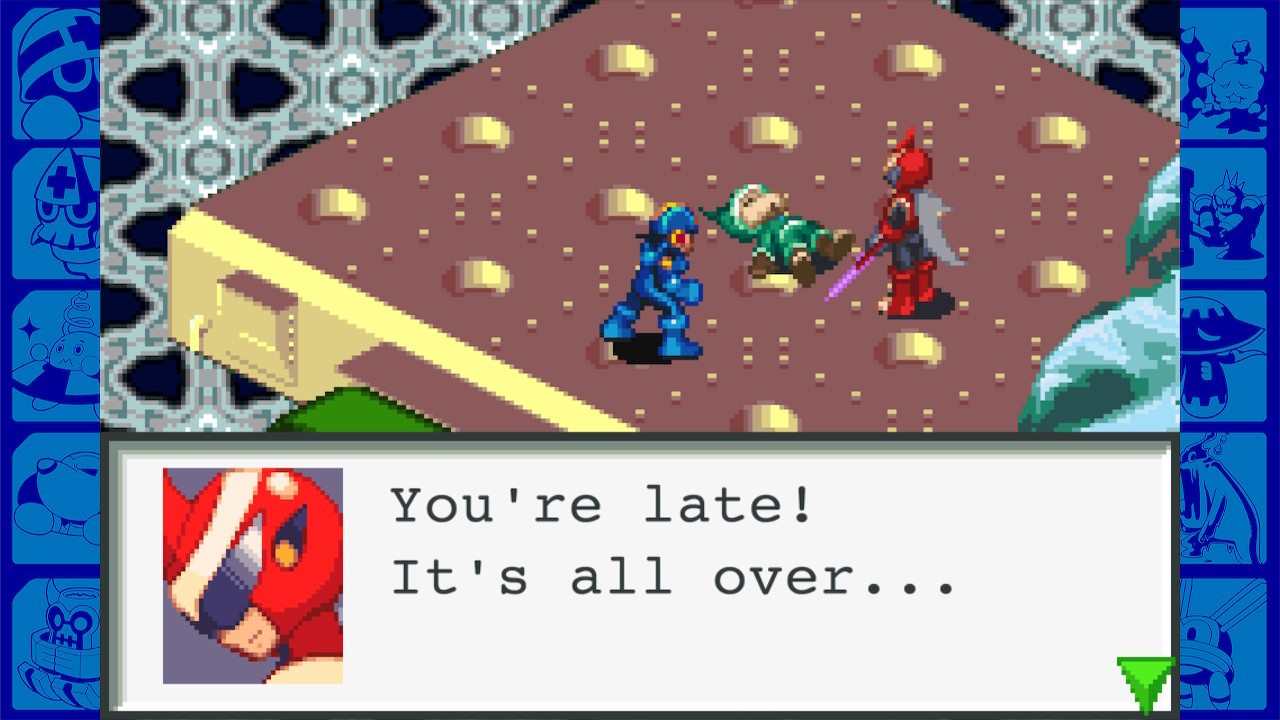
Abilities range from short-range but powerful attacks for summoning other programs, and even altering the terrain to give you an advantage. In later games with version differences, the variety of chips is the largest difference. Some games have minor story changes but collecting all the chips across all versions is challenging for hardcore fans.
The original game is the premise at its most simplistic. The combat and chip systems were still being figured out at this point in the series and it shows. There is almost no way to customize Mega Man either and he relies on permanent power-ups to increase his stats. Given the absurd encounter rate in the first game, it won’t take long to earn enough money to buy out the stock for HP boosts.
The second game is where Battle Network comes into its own. The gameplay is mostly the same and recycles almost all the same graphics and locations, but introduces Style Change and sub-chips for passive effects and to alter elemental affinities. This adds more depth to battles and the overall experience is more challenging since Mega Man does not recover HP after a battle anymore.
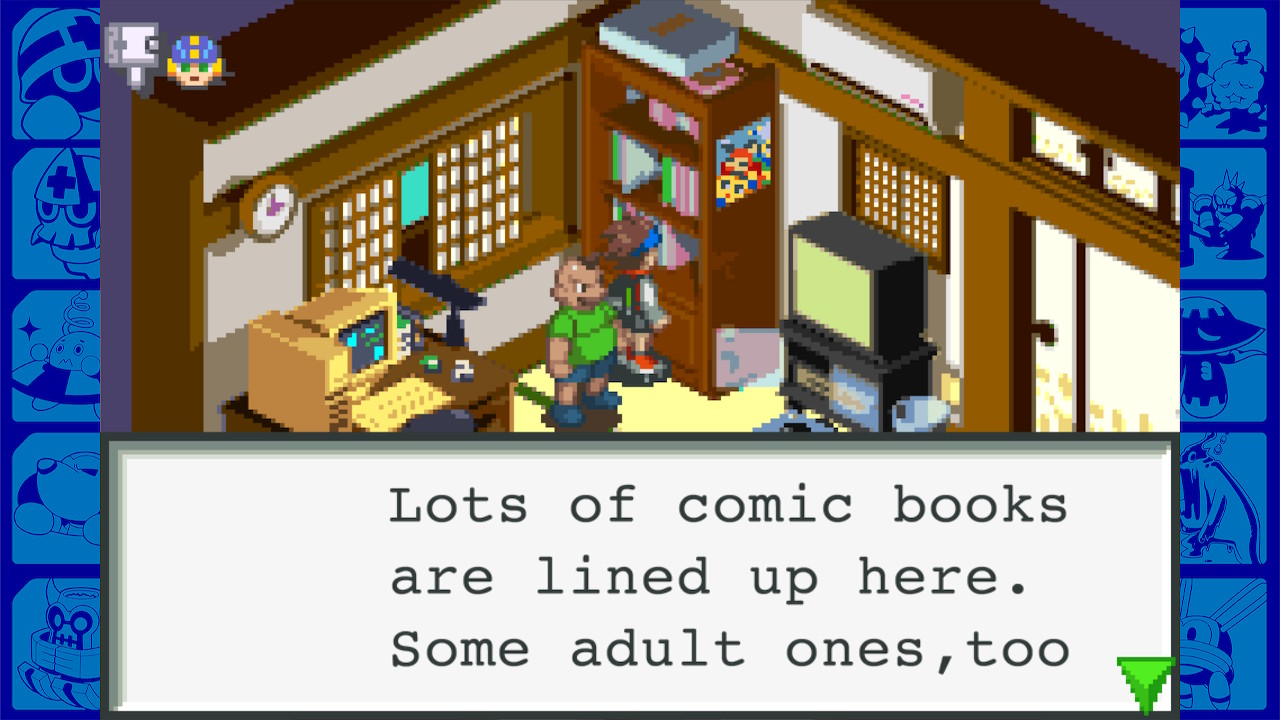
Battle Network 3 is the high point of the Mega Man Battle Network Legacy Collection. The Navi customizer is an inventory-like grid system that further allows players to customize Mega Man’s stats and specialize in passive skills or increase the number of chips held. This is also where the story reaches a fitting conclusion and emotional peak.
Battle Network 4 is where the franchise stumbles. The boys at Capcom probably did not expect to follow up after the events of 3 and it results in 4 being a meandering and confusing story that implements a randomizer to determine which of the main opponents are fought. This is also where the franchise changes its art style which ends up looking gaudy in places.
Most of the Mega Man Battle Network games are fairly lean in their length and clock in under 15 hours to reach the post-game. With Battle Network 4, you will feel its length due to some egregious filler content that makes the experience feel longer than it is. It is an experience with lingering after tones of longing and regret.
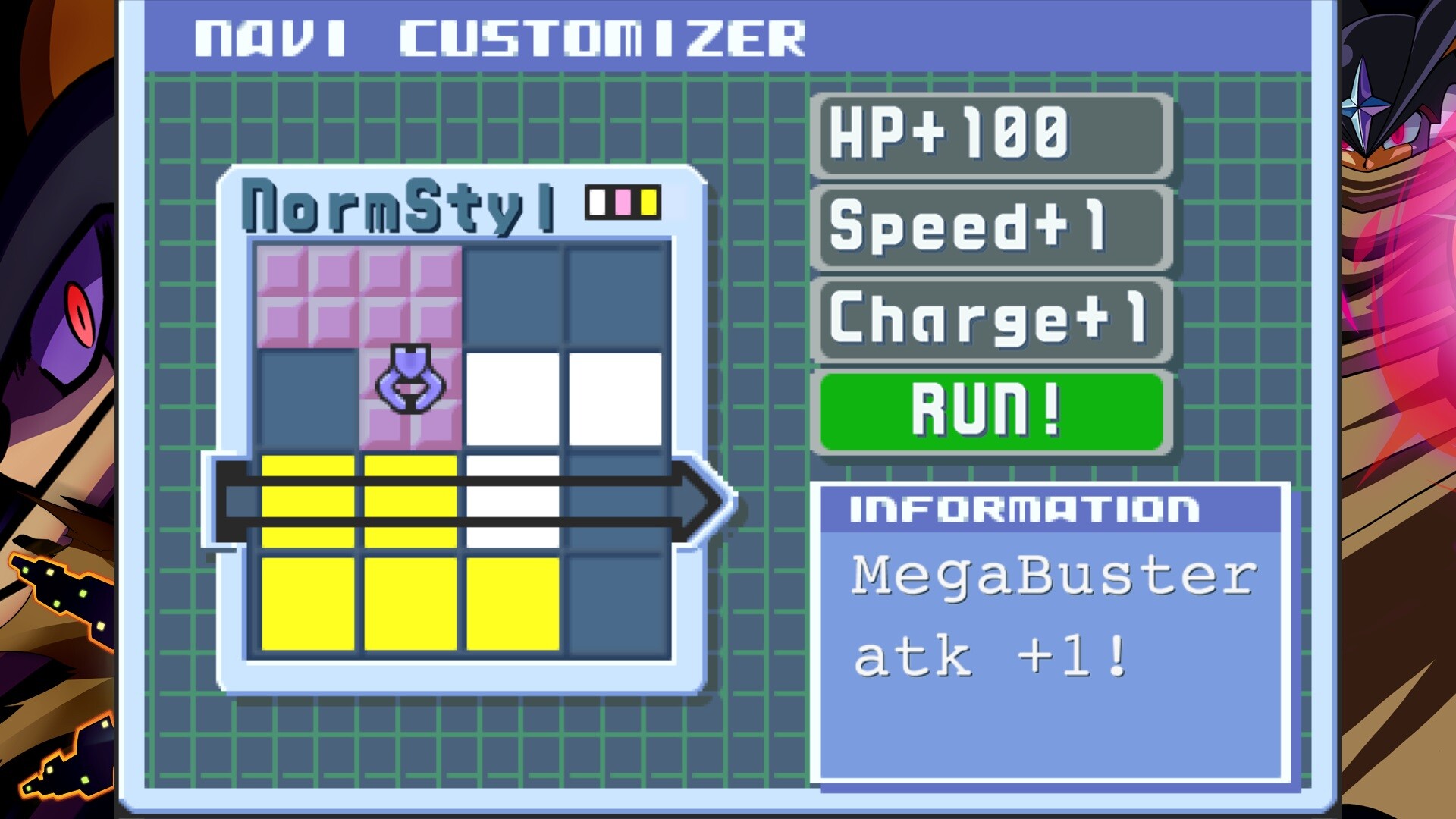
Battle Network 5 has some course corrections but does have some new design concepts that don’t work out as well as hoped. Liberation Missions are the new gimmick and they have the player use Navis other than Mega Man. These battles have a different flow to the action and unfortunately, the odds are stacked against the player and they aren’t as fun to play as compared to Mega Man himself.
Battle Network 6 is the final entry and is the underrated game in the series. The new Cross System allows Mega Man to take on the properties of other Navis and he can also go into beast mode. There are some instances of padding, like only one sidequest being active at a time which adds a lot of tedious walks to the help board.
As the stories unfold from the first game onwards, Lan’s character is gradually rewritten as a dense meathead. This was likely done for expository purposes since these games were aimed at a young audience. Having Lan be dumb would allow other characters to explain concepts to the player in a way a kid can understand.

By the time Battle Network 6 comes to a close, it will have felt like experiencing Lan’s entire childhood. It unfolds like a Saturday morning anime and each game feels like a season-long arc, with everything culminating with him heading to college.
The setting becomes a character in its own right. With every game passing, so does the sense of time passing. Each entry shows signs of change happening in the world and it all helps give the setting a sense of place. Shops open and close. Child NPCs grow up and minor characters get their development too. All of this is in service to making the world feel lived in and believable.
The visuals in Mega Man Battle Network Legacy Collection barely change. It is only in the fourth entry that the art style makes a change. Between all the titles, they’re very consistent with each other. At the time when these were sold separately, this might have made gamers feel ripped off that all of these games recycle a lot of assets. When played together in this compilation, it makes each title feel like a chapter in one big game.
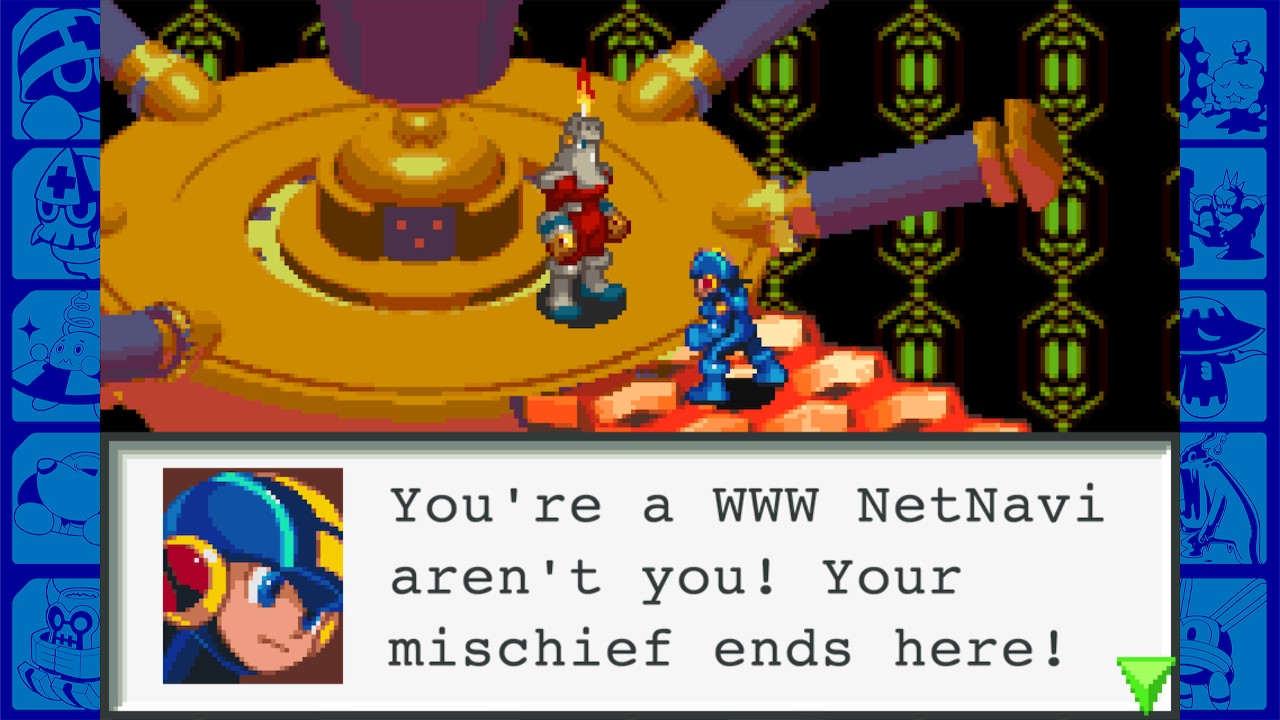
The Gameboy Advance was a portable system that hit a bizarre sweet spot between 16 and 32-bit era graphics. Compounded with the low screen resolution, it lead to graphics being more advanced than what was on the SNES but also looking chunky. The lack of a backlit screen also leads developers to make their games more brightly colored, which is why the Battle Network games have their distinct color pallet.
Many assets are highly compressed 3D prerenders and are mixed with hand-drawn pixel art. The effect is convincing and cohesive that the elements never look like they don’t match. It is too bad the visuals get butchered when the smoothing filter is activated. This feature should never be used by anyone.
Mega Man Battle Network Legacy Collection needed better image filter options that could better simulate the look of a Gameboy Advance panel. Other image control features that would have been welcomed would have been a slider to tweak the contrast.
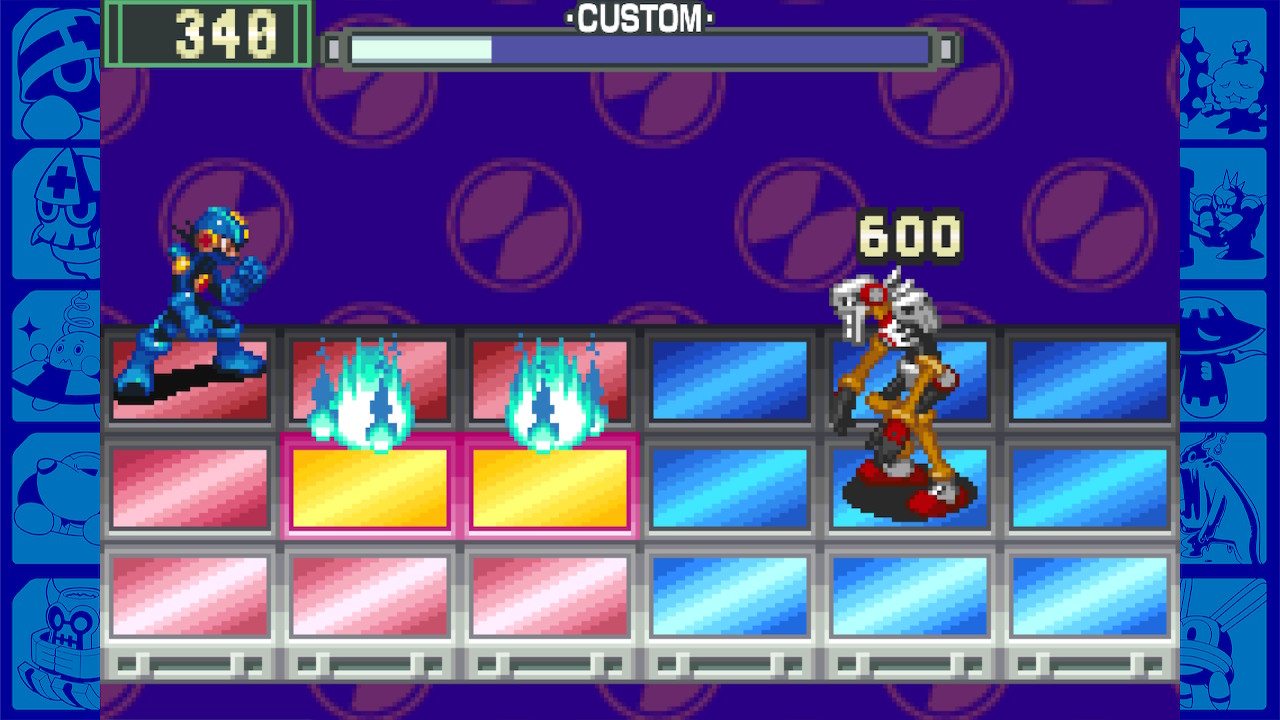
Mega Man Battle Network Legacy Collection compilation comes with a lot of art to look at, but the big additional feature is the “Mega Buster”, which is a “win” button. This mode gives all basic buster attacks devastating power. While it is handy to bypass the frequent random encounters, a toggle to disable encounters would have been preferable.
The lack of a mini-map also contributes to spending many lost hours wandering cyberspace. The paths can all look alike and the constant battling will lead to disorientation. Instead of overpowering foes and having to endure the regretful victory screens, either a map to quickly navigate a maze or encounter skipping would have been preferable.
With the sparse QOL additions, Mega Man Battle Network Legacy Collection is still an impressive compilation that gives the player a lot of bang for their buck. These aren’t cleverly-written RPGs, but they are dense with complexity and gameplay options that will challenge genre veterans.
Mega Man Battle Network Legacy Collection was reviewed on Nintendo Switch using a copy provided by Capcom. You can find additional information about Niche Gamer’s review/ethics policy here. Mega Man Battle Network Legacy Collection is now available for Windows PC (via Steam), PlayStation 4, PlayStation 5, and Nintendo Switch.